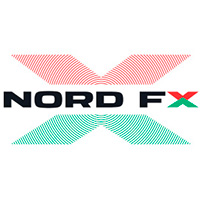Every holiday season, articles surface about a bullish stock market phenomenon called the Santa Claus Rally. Is it a reliable “long” opportunity, or is it just hype? Respectable financial sites predict that Santa has some helpers to ensure 2022 will see a rally, but it might take more than the Fed’s tactics to fill Wall Street’s stocking this year.
Dewey’s cycle and the recurring phenomenon
First, for those who don’t know about this holiday hype, the Santa Claus Rally is a theory created by Edward Dewey. The rally got its name after Dewey noticed that the stock market usually improves around Christmas, during the last trading days of the calendar year, causing an increase in investor demand and driving a temporary upward trend. Dewey, the founder of the Foundation for the Study of Cycles, noted and studied an oddity in stock prices that occurs only between December 20th and January 20th. Dewey wrote about his discoveries on long-term cycles in the market, explaining that there was exceptional strength in this time period, usually every 2-3 years. Dewey also reported that the stock market might have an 84% likelihood of being higher during the Santa Claus period.
Of course, statistics don’t always hold true when it comes to forecasting. It is, after all, only an indicator, not a roadmap. But what if there were other forces at work that might support a Santa Claus Rally?
Santa’s Rally: The little helpers
There are many influences behind the theory of a bullish Christmas. New year optimism, increased holiday spending, and tax-loss selling are all factors in recent Santa Claus rallies. Other causes include year-end bonuses and the sentiment-based expectation that stock prices will rise around Christmas.
Remember, on average, almost 70% of year ends market moves are bullish. Even the Federal Reserve Bank announced that interest rates will stay the same between now and the spring of 2023. Such a prediction could fuel this year’s Santa Rally. The last time the Fed paused rates was in 2013, and stocks went up almost immediately after the announcement. So, according to mainstream media and the Fed, Santa is coming.
Santa's S&P 2022
The Santa Rally affects all stock market categories. From consumer electronics to energy companies, the end-of-year rally has no historically discernible preference, but the obvious choice for a trader wanting to ride a stock market rally is the S&P500. Looking back to see how the stock market reacted during this cyclic period, the last two years were bullish. The 2019 fall needs no explanation. But given that, statistically, only two out of three price moves are positive, the third has a greater likelihood of being negative. Will 2022 be a triple bull for Santa, or will the law of averages ring true?
As always, it’s important to remember that past performance does not guarantee future results. And remember, the last Santa Claus rally proceeded a steep decline from January that lasted much of this year, with brief summer bulls in July and August. Also, the market has already had an uptick in Q4 22. Perhaps Santa came early?
Market participants are unsure of how quickly and to what extent the central bank will go with interest rates. The Fed's actions will have an enormous impact on markets in the coming weeks and months, but the big picture is still unknown.
The bottom line
Factoring in the recent bullish push, a Chinese Covid outbreak, and 2023 recessionary fears, there’s a big chance that Santa won’t be coming this year. That doesn’t mean you should short the markets this holiday season. Banks are predicting the recession effect will begin in spring of 2023, so perhaps let the bears sleep till pre-spring before considering a shorting position on the S&P500.
If you will be trading during the Santa Claus season, keep one eye on the tree and one eye on your trader app. Set notifications. Sometimes, big things happen while everybody is busy overeating and having fun with family.
 Trump has declared that the United States could become the global capital of the crypto industry. To achieve this, he proposes reducing regulatory pressures.
Trump has declared that the United States could become the global capital of the crypto industry. To achieve this, he proposes reducing regulatory pressures. Forex trading is a captivating endeavor, promising both active and passive income streams. Yet, mastering forex is a continuous journey that transcends expertise levels, be it a novice or a seasoned trader...
Forex trading is a captivating endeavor, promising both active and passive income streams. Yet, mastering forex is a continuous journey that transcends expertise levels, be it a novice or a seasoned trader... In a resounding victory, NordFX, a prominent brokerage firm, has been crowned the "Best News & Analysis Provider" of 2023...
In a resounding victory, NordFX, a prominent brokerage firm, has been crowned the "Best News & Analysis Provider" of 2023... Errante, the premier online broker, is dedicated to delivering top-tier services and forging long-lasting, trust-based relationships with our clients. Our mission is to enhance your online trading journey...
Errante, the premier online broker, is dedicated to delivering top-tier services and forging long-lasting, trust-based relationships with our clients. Our mission is to enhance your online trading journey... Gold, a precious metal revered for its value for centuries, has found its place in the world of trading. Trading gold has become a popular way to invest in the commodity market...
Gold, a precious metal revered for its value for centuries, has found its place in the world of trading. Trading gold has become a popular way to invest in the commodity market...